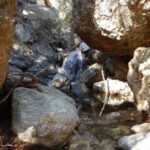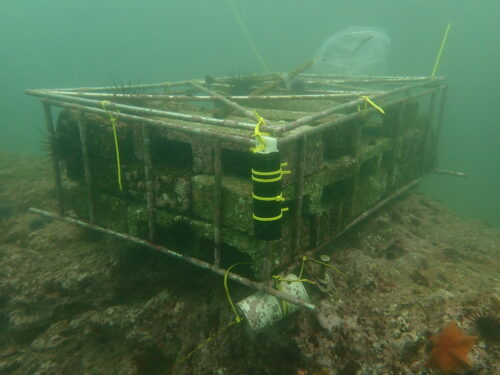
Measuring Diffused Sunlight in Lakes
June 11, 2019
Monitoring Shallow Water Habitat in the SW Baltic Sea
July 16, 2019The White Abalone Restoration Consortium
Project Details
- PRODUCT(S): miniDOT® Logger
- APPLICATION: Coastal / Ocean
- PARAMETER: Dissolved Oxygen, Temperature
- LOCATION: Bodega Bay, California
- ORGANIZATION: White Abalone Restoration Consortium
- RECOGNITION: Katie Sowul, UC Davis

Case Study Description
Researchers from the University of California, Davis (UCD), the National Oceanographic and Atmospheric Administration, the California Department of Fish and Wildlife, and other local and international programs have joined together in the White Abalone Restoration Consortium (WARC), working toward the goal of restoring federally endangered White Abalone populations.
Declining Numbers, Endangered Status
White Abalone once numbered in the millions in California coastal waters and served as an important food source for native peoples for thousands of years. A commercial fishery for the species began in the 1970s and thrived through that decade and into the 1980s.
Abalone reproduce by broadcast spawning—females releasing eggs into the water, where they are fertilized by sperm released by males. Successful fertilization on a large scale requires population density—large numbers of males and females in proximity. Over-fishing reduced population density below the level required for sustainability and populations plummeted as the species’ restaurant popularity grew. Increasingly strict regulations, seasons, and limits were implemented in an attempt to halt the decline, but the damage had already been done and the commercial fishery was eventually shut down entirely.
Hindered by low reproduction rates and disease, abalone populations continued to decline, even with the commercial fishery closed. In 2001, the White Abalone was officially listed as endangered, in accordance with the provisions of the Endangered Species Act.
Monitoring the Habitat
Working to restore White Abalone populations, UCD and partnering institutions in WARC collect continuous oxygen and temperature data at important subtidal sites along the Southern California and Baja coastlines. Monitoring oceanographic trends allows researchers to understand and predict changes in current abalone populations and kelp forest dynamics. It also helps identify sites and times which might be conducive to successful outplanting of new abalone, which given the species’ low reproductive rate, will be necessary in helping populations recover.
The Role of MiniDot Loggers
UCD and partnering researchers use PME’s miniDOT loggers extensively in their research. 
MiniDOT loggers have allowed the UCD team to closely monitor the hourly variations in dissolved oxygen and temperature within subtidal zones ranging from 10 to 85 feet below the ocean’s surface. Data collected by miniDOTs off the San Diego coast has helped researchers understand more about seasonal variation in abalone habitat and the best times and seasons to stock new abalone. A miniDOT sensor near Fort Bragg, California, is providing researchers with key information about a kelp forest system that is currently experiencing catastrophic imbalance.
Global climate change, which often manifests in lower dissolved oxygen levels, can also play a role in declining invertebrate numbers. MiniDOT loggers help researchers monitor DO levels and can help diagnose the cause of an invertebrate die-off.
Better Understanding, Better Outcomes
Researchers in the WARC team believe data provided by the miniDOT loggers allows them to better understand how economically and ecologically important invertebrate fisheries are being actively affected by declining DO levels. They also find that they have a better understanding of abalone habitat overall and more information to make better decisions for the future of the species.
Product Description
PME’s miniDOT logger is a completely submersible instrument that logs dissolved oxygen and temperature measurements. The oxygen sensor is an outpode that measures dissolved oxygen concentration in water through a fluorescence method. Data are recorded to an internal SD card.

